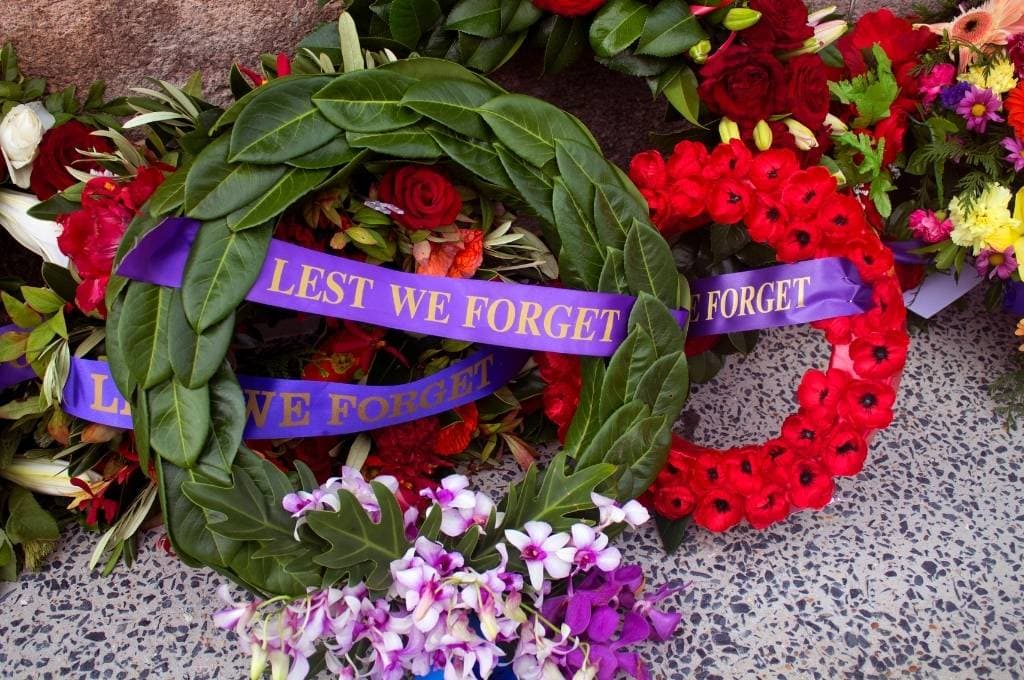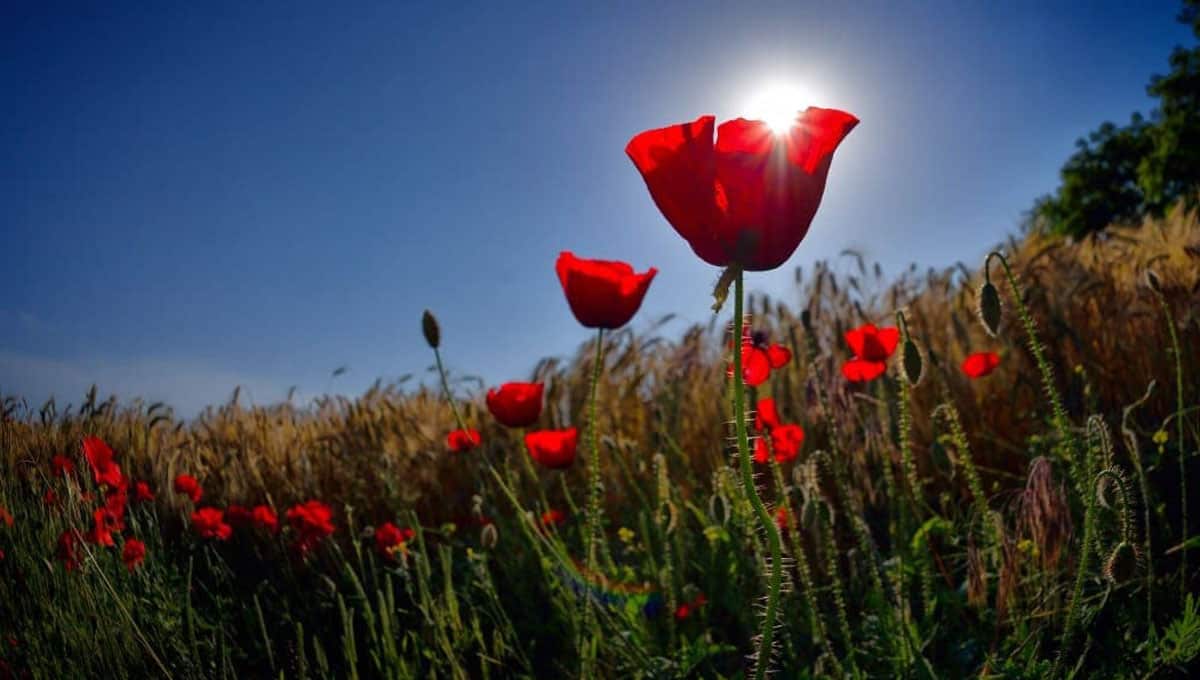Are you looking for ANZAC Day facts for kids? Check out these ANZAC Day facts for primary school in our simple guide to ANZAC Day to help children understand what happened on ANZAC Day and why we commemorate it.
ANZAC Day, an important commemorative event, pays tribute to the Australian and New Zealand Army Corps (ANZAC) who fought valiantly during World War I. Observed annually on April 25th, ANZAC Day honors the courage, sacrifice, and resilience of the ANZAC soldiers who served their countries.
During this solemn occasion, ceremonies are held throughout Australia and New Zealand, with dawn services being a poignant tradition. Crowds gather to witness the symbolic break of dawn, reflecting the time when the ANZAC troops courageously landed at Gallipoli in 1915. The solemnity of the occasion is felt as wreaths are laid, buglers play the Last Post, and moments of silence are observed, allowing individuals to reflect on the profound impact of war.
10 Facts about ANZAC Day:
- ANZAC Day commemorates the bravery and sacrifice of the ANZAC soldiers.
- The first ANZAC Day was observed on April 25, 1916.
- ANZAC Day initially focused on honoring the soldiers who fought at Gallipoli during World War I.
- Today, ANZAC Day also pays tribute to all Australians and New Zealanders who have served and died in war and conflicts.
- Dawn services are held across both countries to remember the ANZAC soldiers’ landing at Gallipoli.
- ANZAC biscuits, a traditional treat made from oats, flour, coconut, and golden syrup, are often baked and consumed on this day.
- Marches are held where veterans, current servicemen and women, and community groups proudly walk together.
- Red poppies are worn on ANZAC Day as a symbol of remembrance.
- The Ode of Remembrance, a solemn recitation, is spoken during commemorative ceremonies.
- ANZAC Day is a national public holiday in Australia and New Zealand, allowing people to reflect on the significance of the day and attend memorial events.
ANZAC Day is Australia and New Zealand’s national day of remembrance for all soldiers who have fought and died in wars and conflicts around the world. Every year on the 25th of April, people in both countries gather for services at dawn, as well as for parades and ceremonies throughout the day.
Read on for more ANZAC Day facts about the ANZACs and why this day is so important for Australians and New Zealanders.

ANZAC Day facts for primary school kids
Here are the ANZAC Day facts for kids that you can use in a school project.
- The ANZACS landed on the Gallipoli Peninsula in Turkey on the 25th April 1915. This day is now known as ANZAC Day.
- ANZAC stands for Australia and New Zealand Army Corps.
- The term ‘ANZACS’ is used to refer to Australian and New Zealand soldiers who fought in World War 1.
- World War 1 began in August 1914 when Britain and Germany declared war on each other. Australia and New Zealand followed Britain into war.
- At the time of World War 1, Australia had only been a country for 13 years. World War 1 is seen as an important moment in Australia’s history.
- The Gallipoli Peninsula is very near the ancient city of Troy.
- The battle at Gallipoli lasted 8 months, with more than 11,000 ANZACS dying and 23,500 being wounded in battle.
- All ANZAC soldiers who fought at Gallipoli were volunteers – they weren’t drafted into service like soldiers were in other countries.
- Wives of ANZAC soldiers made what we now know as ANZAC biscuits for their husbands. Since they contained no eggs or milk, they had a long shelf life. The soldiers ate them instead of bread.
- ANZAC Day wasn’t officially a public holiday in Australia or New Zealand until 1921.
- The first dawn service was in 1923. Dawn is significant because this is when the soldiers landed at Gallipoli. It is also considered the best time to attack in battle.
- Other countries who celebrate ANZAC Day include Samoa, Tonga, and the Cook Islands. There are also services in France, England, and at the Gallipoli Peninsula in Turkey.
- While ANZAC Day was originally meant to honour the soldiers who fought and died at Gallipoli, it is now used to honour all soldiers who have fought and died.
- Poppies and rosemary are worn on the day as reminders of the loss of all soldiers in all wars.
- Alec Campbell was the last known Australian survivor of the Gallipoli campaign. He passed away in 2002.
Check out these awesome ANZAC day books for kids!
Resources for ANZAC Day
- Download & print these ANZAC Day kids activities – word search, colouring-in and fill in the blanks.
- ANZAC Portal – Speeches for commemorations – Here you will find sample speeches as a starting point to develop a script for Anzac Day.
- Bugle Calls – Download both the Last Post, Rouse and Reveille. Available from multiple sources in .wav and .mp3 formats. Includes other material which may also be useful.
- Military Bugle Calls – Download both the Last Post and Reveille. Other calls are also available. MP3 format.
- Outline of ANZAC Day Commemoration Service
Suitable for high schools and communities. You can find a suitable service outline for Primary Schools here. - The Last Post – Information on the Last Post, a recording
ANZAC Centenary
The ANZAC Centenary was from 2014 to 2018 and commemorated Australia’s involvement in World War I and remembered anyone who has served in a war or conflict as well as those still serving in the Defence Forces today.
It was on 1 November 1914 that the first convoy of Australian and New Zealand ships left Albany in Western Australia to transport the ANZACs to the battlefields of World War I.
When most people think of the ANZACs, they think about the infamous landing at Gallipoli on 25 April 1915. The 100th anniversary of this moment was commemorated with many events around Australia and around the world.
On 25 April 2015 the traditional Dawn Service at Gallipoli was attended by more than 8000 Australians, 2000 New Zealanders and 500 official representatives from other Nations, forming a 10,500 strong crowd on the Gallipoli Peninsula in Turkey.
In Australia, the five years of the Centenary was filled with air shows, art awards, marathons, exhibitions, parades and much more.
Communities all over Australia remembered, recorded and retold some of the millions of stories and events that Australians experienced during World War I.
Commemorations that happened in 2018
In 1918, the last year of the war, the German military made one final large-scale offensive on the Western Front. Luckily they did not succeed as the Allies continued to achieve victories and by the second half of the year, the German Army could no longer continue fighting.
Three ANZAC Day events were commemorated in 2018
The Second Battle of Villers-Bretonneux (April 1918)
The Second Battle of Villers-Bretonneux (also Actions of Villers-Bretonneux, after the First Battles of the Somme, 1918) took place from 24 to 25 April 1918, during the German Spring Offensive, against the Allied lines to the east of Amiens.
Battle of Hamel (July 1918)
The Battle of Hamel (4 July 1918) was a successful attack by Australian Army and US Army infantry, supported by British tanks, against German positions in and around the town of Le Hamel, in northern France, during World War I. The attack was planned and commanded by Lieutenant General John Monash, commander of the Australian Corps and Australian Imperial Force. The town was a strategic win for the Allies. The Hamel attack was a success and only took around two hours to complete, although Australia suffered 1,062 casualties including 800 deaths.
Armistice of 11 November 1918
The Armistice of 11 November 1918 was the armistice that ended fighting on land, sea and air in World War I between the Allies and their last opponent, Germany. Previous armistices had eliminated Bulgaria, the Ottoman Empire and the Austro-Hungarian Empire. Also known as the Armistice of Compiègne from the place where it was signed, it came into force at 11 a.m. Paris time on 11 November 1918 (“the eleventh hour of the eleventh day of the eleventh month”) and marked a victory for the Allies and a complete defeat for Germany, although not formally a surrender. Today, we commemorate this event on Remembrance Day and observe one minute’s silence at 11 am on 11 November.
Looking for ANZAC Day activities for kids?
- We’ve complied a list of ANZAC Day activities for kids – click here.
- Need to explain ANZAC Day to toddlers? Click here for help!
- Download our FREE ANZAC Day printables by clicking here.

